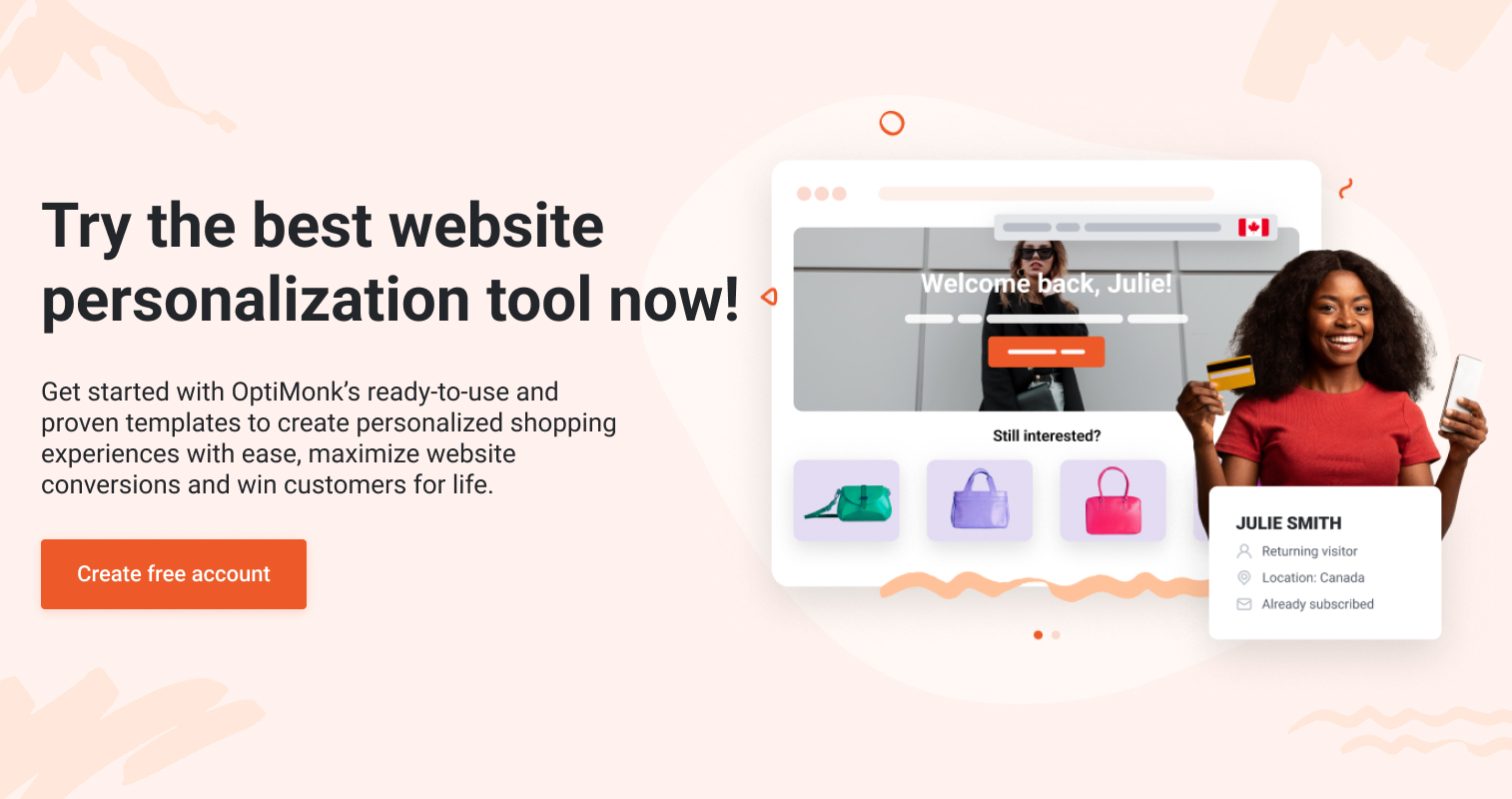- Blog
- 12 Quick and Effective Tips to Boost Conversions in 2025
12 Quick and Effective Tips to Boost Conversions in 2025
-
Barbara Bartucz
- Conversion
- 6 min read
Table of Contents
Are you ready to boost conversion rates and make those marketing efforts pay off?
You know it’s essential because when you increase conversions, you’re capitalizing on all that juicy incoming traffic, smoothing out visitor pain points, and increasing revenue.
But where do you start? Lucky for you, we’ve got your back.
In this guide, we’ll be providing you with 12 game-changing conversion rate optimization tips to increase your website’s conversion rate and drive more sales.
Let’s get started with our list of bulletproof tips, but first, a few basic conversion optimization concepts…
What is a website conversion?
Website conversions occur when website visitors complete a desired action. This action can be making a sale, collecting a lead, or generating a sign-up.
When we’re talking about ecommerce, a website conversion is usually making a purchase.
The conversion rate is the percentage of website visitors who complete the desired action.
For example, if 100 visitors come to an ecommerce site and three of them make a purchase, the site’s ecommerce conversion rate would be 3%.

Why does your conversion rate matter?
Now let’s talk about why conversion rates matter so much.
Think of your conversion rate as the heartbeat of your ecommerce website. It tells you how well you’re turning visitors into paying customers.
A high conversion rate means you’re doing something right. You’re connecting with your audience and meeting their needs.
A low conversion rate? That’s a sign something’s off. Maybe your website isn’t user-friendly, or your marketing message isn’t clear.
Here’s why you should care about increasing conversions:
- Revenue boost: Better conversion rates lead to more sales without driving more visitors. You’re making more money from the visitors you already have. It’s efficient and cost-effective.
- Customer insights: Analyzing your conversion funnel helps you understand your customers better. You learn what they like, what they don’t, and how they behave on your site. This information is gold. It helps you tweak your strategies to better meet their needs.
- Marketing efficiency: A good conversion rate means your marketing efforts are paying off. Every dollar spent on advertising goes further. You get a higher ROI, which is crucial for any business.
In the end, focusing on your conversion rate is about making the most of what you have. It’s about working smarter, not harder. So, keep an eye on that metric. It’s a powerful indicator of your business’s success and potential.
12 conversion rate optimization tips
Increasing conversions doesn’t always require a complete overhaul. Sometimes, small tweaks can make a big difference.
In this section, we’ll look at 12 easy and proven conversion rate optimization tips that will help you boost your online sales.
1. Match your website messaging to your ads
One way to increase conversions is to personalize your messaging based on the ads that your visitors clicked to land on your website or landing page.
It’s simple, really.
For instance, if someone clicked on a weight loss ad, chances are they’re interested in shedding some pounds. So why not use this information to create a visitor segment and customize your messaging to cater to their interests?
You can create a popup that speaks directly to their weight loss goals, just like Obvi did below.
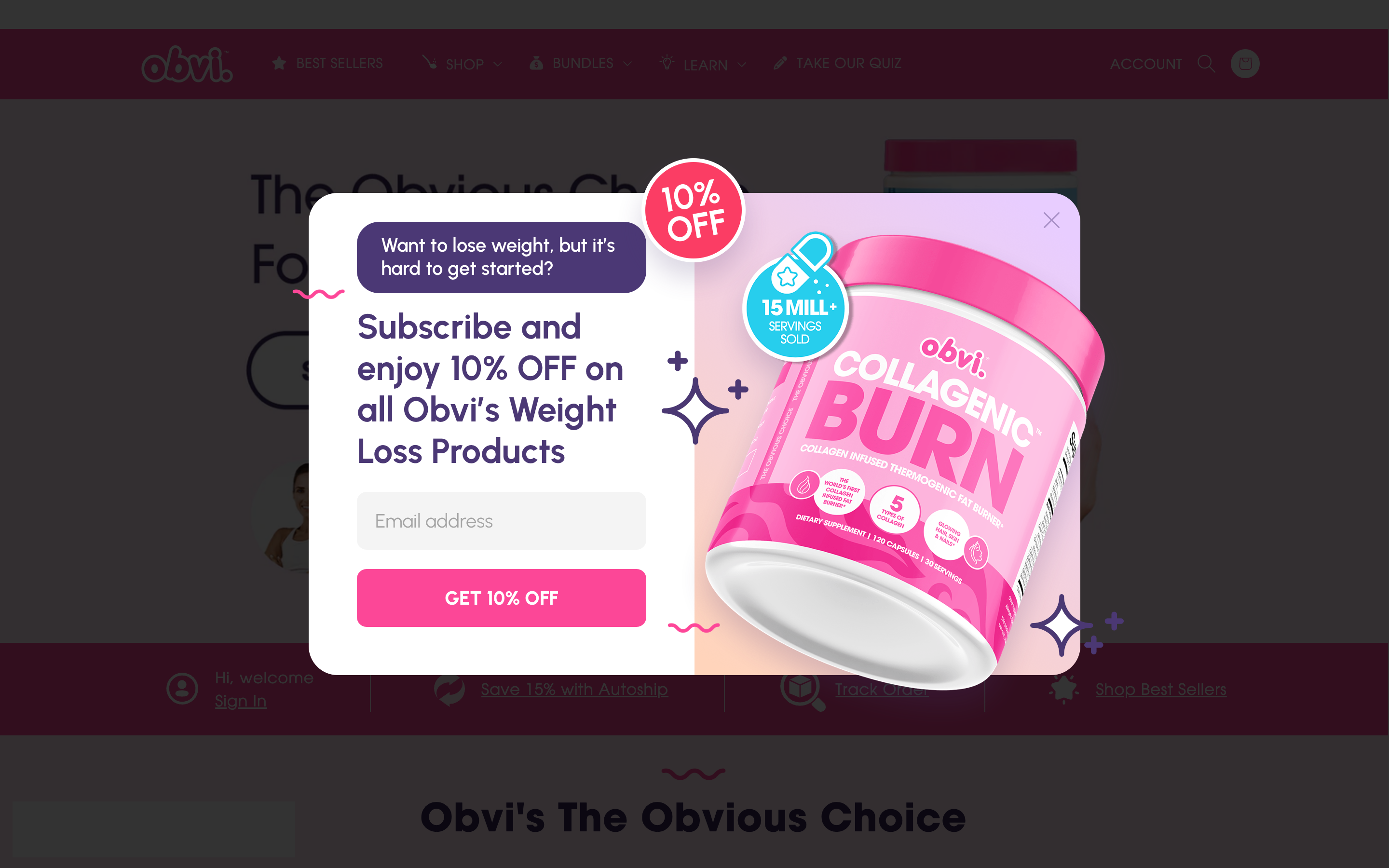
This weight loss-related discount code will be highly relevant to this customer segment, and therefore it can help increase your conversion rate.
And you can create further segments based on all the different ads you have.
Here’s another example from Obvi where they market to potential customers that are interested in sleep products:
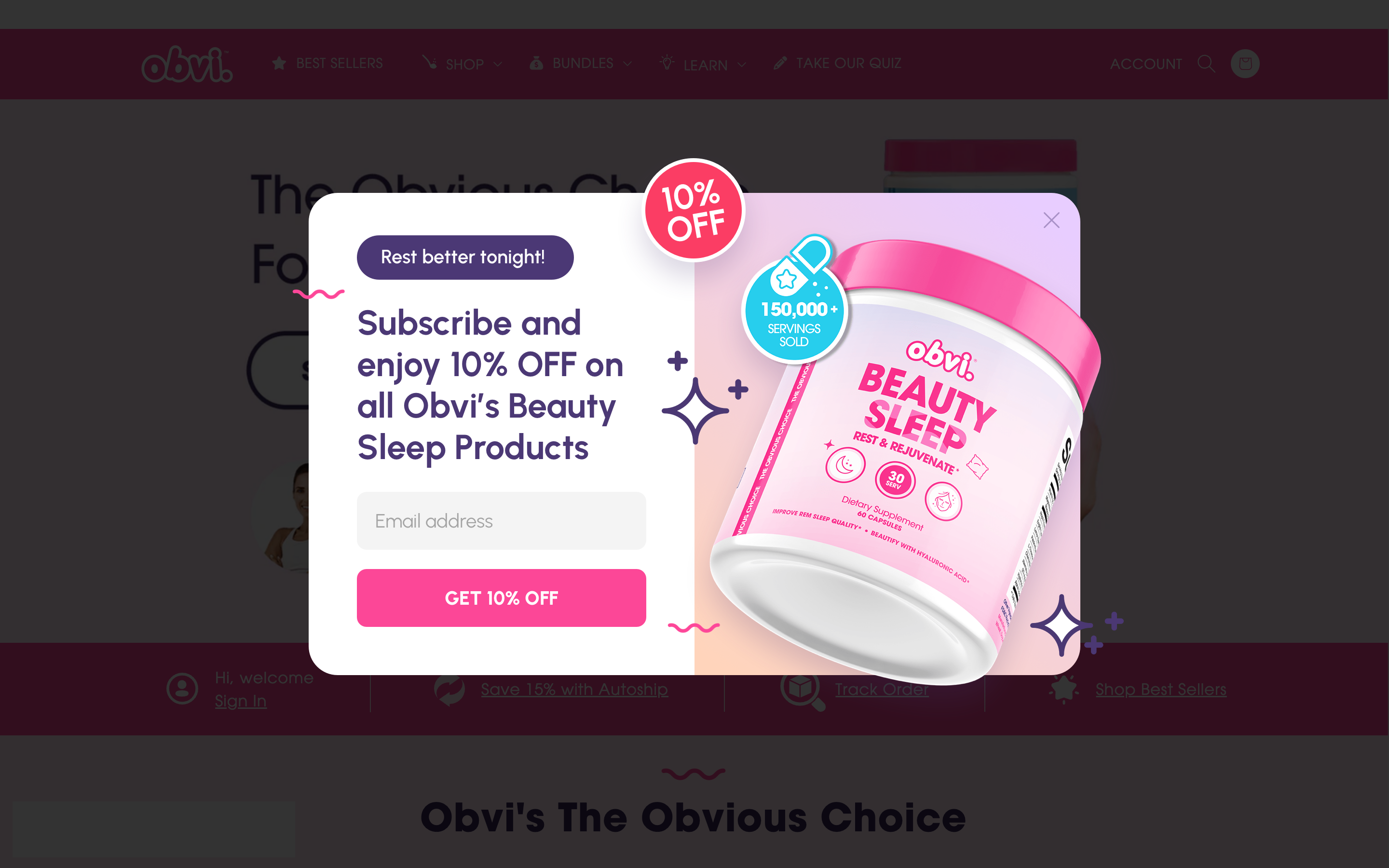
By providing personalized, relevant content to your visitors, you can capture their attention and increase the chances of them converting.
This approach can be a powerful way to get a huge boost to your conversion rates and ultimately drive more sales for your business.
2. A/B test your headlines
Studies have shown that A/B testing can increase your landing page conversion rates by up to 50%.
So if you aren’t sure which headline will best resonate with your target audience, testing a few different versions is an effective approach.
For example, you can gain more conversions by using A/B tests to decide which unique selling proposition (USP) is the most effective for your target audience.
After all, a well-defined USP and a relevant value proposition can make or break a landing page. When you’re able to capture your visitors’ attention on a landing page, it gets the user journey off to the right start.
Here are two landing page headlines from BlendJet. Notice how one promotes its portability and the other highlights its self-cleaning capabilities.
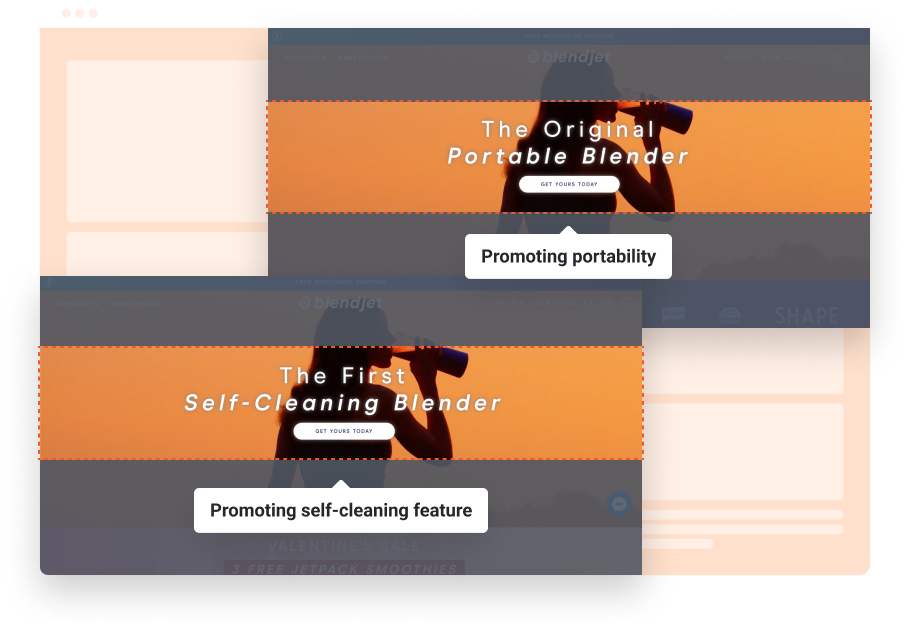
3. Welcome returning visitors with a personalized offer
Returning visitors are an essential segment for ecommerce sites, since it often takes more than one visit for someone to decide to make a purchase. So when you’re working on conversion rate optimization, you shouldn’t forget about them!
Building strong relationships is essential to maximizing the lifetime value you generate from each customer.
You can make your returning visitors feel valued by offering them a special discount code or personalized offer, and this simple move can provide a big boost to your website conversion rate.
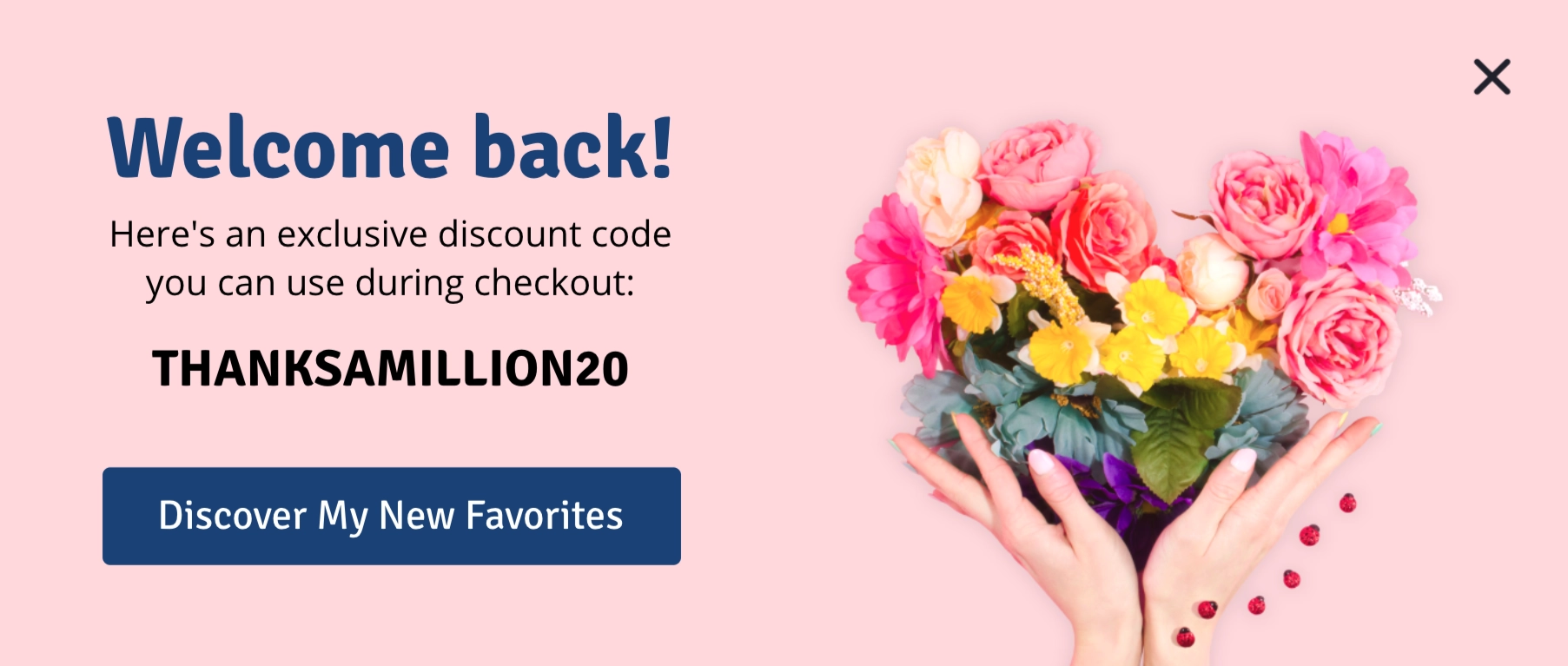
Using OptiMonk’s Embedded Content, you can make sure that only returning visitors will see these “welcome back” messages.
4. Increase the average order value with dynamic offers
Trying to maximize your average order value (AOV) is an important way to boost revenue.
Whenever there’s a high percentage of customers who purchase multiple products, you know that you’re efficiently converting—and maximizing the value of—your incoming traffic.
One effective way of incentivizing customers to spend more is by promoting a special offer to customers whose order value exceeds a certain amount. And it’s even more effective if you’re doing it dynamically.
In the example below, Sissora promotes that “you’re only 27 USD away from your free gift.” The popup copy is updated automatically based on the visitor’s cart value.

You can set up a similar campaign easily with OptiMonk’s Cart Value Countdown Smart Tag.
5. Remind users of their coupons to encourage redemption
Whenever visitors opt in for a time-limited coupon code, you want to make sure that it stays at the top of their minds and that they actually use it. After all, that coupon code makes them much more likely to complete a purchase!
A sticky bar reminder encourages them to start the purchasing process now rather than later, leading to an increase in website conversion rates of up to 50%.
The sticky bar can act as a constant reminder without interfering with the shopping experience.
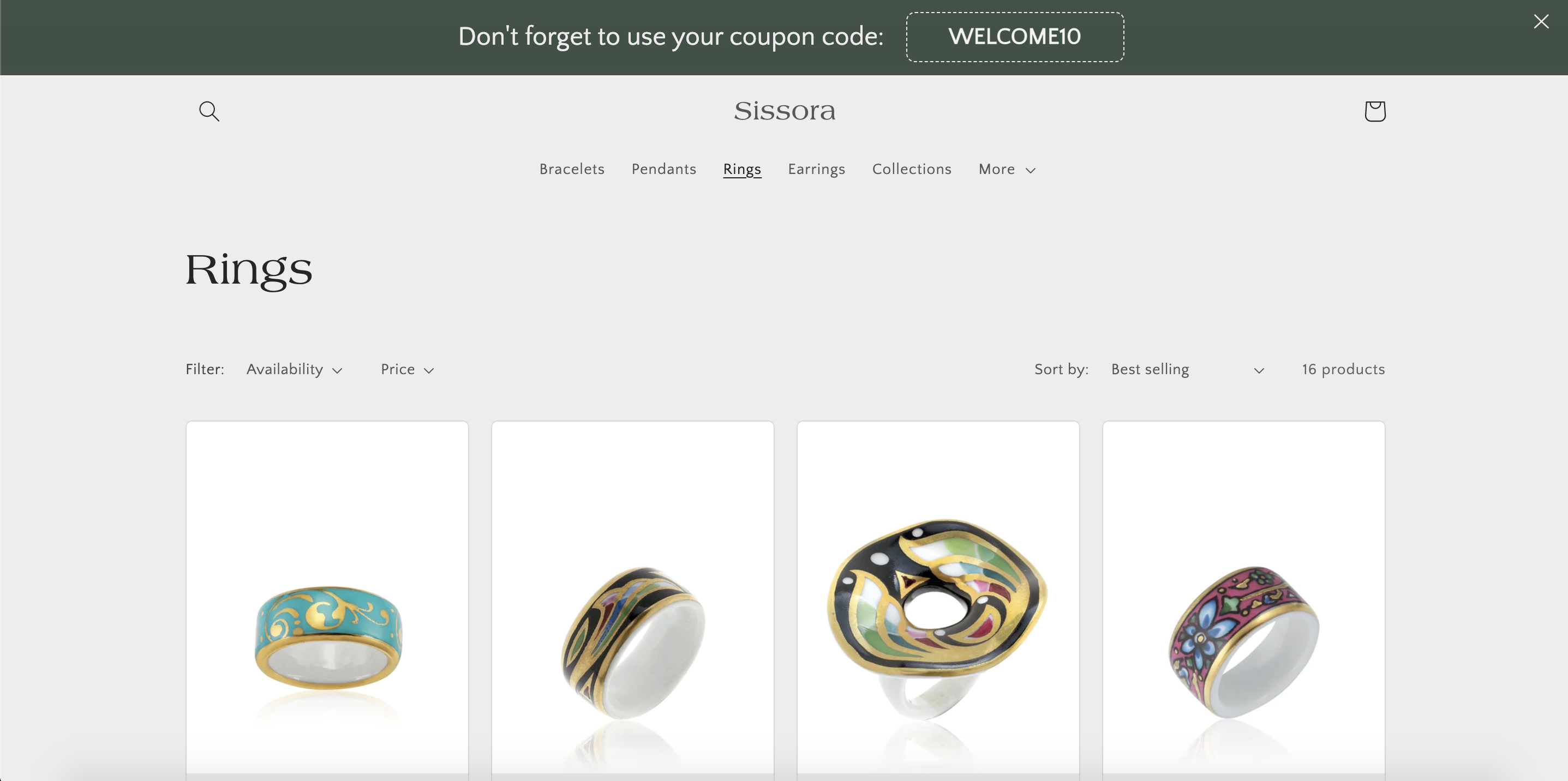
Wanna set up a discount reminder sticky bar? Try these templates:
6. Highlight limited product availability
When you inform your visitors that you only have a limited number of products remaining, they won’t want to miss out on getting a product they really love.
By creating a sense of scarcity, you’ll increase the fear of missing out (FOMO), which is a great motivator for your website visitors to make a purchase now rather than later.
Here’s how Sissora uses OptiMonk’s Embedded Content to tell their visitors when they’re running out of a product:
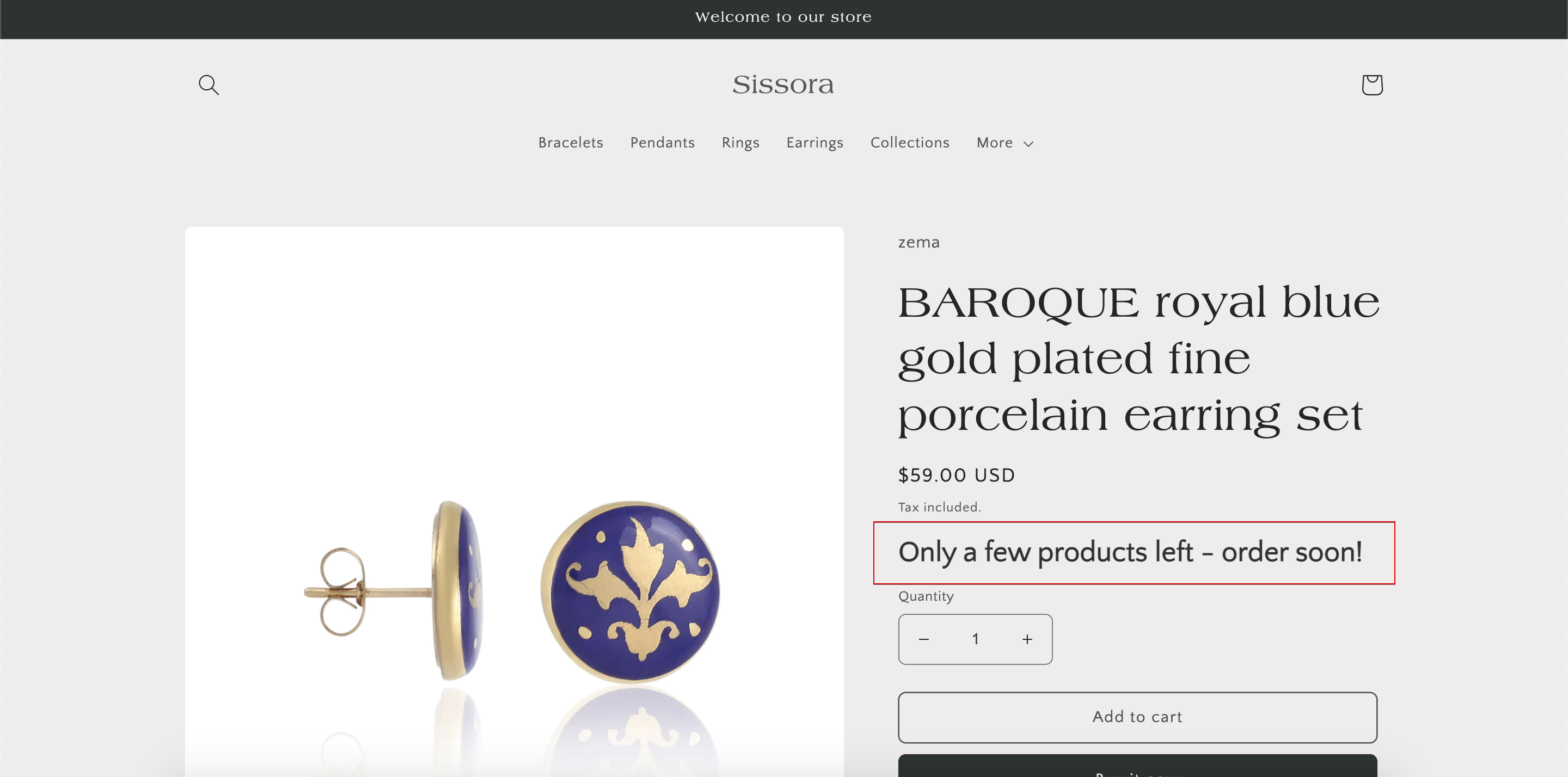
7. Show limited-time offers consistently throughout your site
Marketing campaigns that include limited-time offers are a great way to increase conversion rate for an online store. And it’s a common practice to highlight these offers on the homepage.
But you can maximize the number of visitors that see and respond to your limited-time offer by displaying it not only on your homepage but on every page of your website.
This can be done easily with OptiMonk’s Embedded Content.
Here’s what the same embedded campaign looks like on the homepage and on the product page of BlendJet’s website:
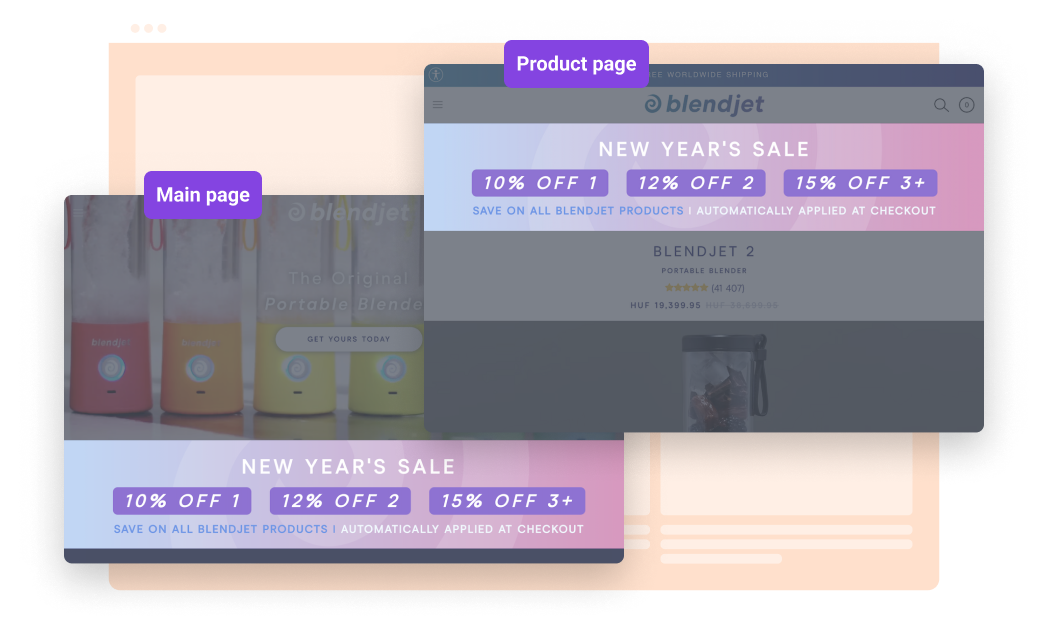
8. Upsell and cross-sell on product pages
Upsells and cross-sells are great ways to boost your AOV. And the best place in your sales funnel to upsell and cross-sell is right before customers are ready to make a purchase.
That’s why SkateHut displays affordable add-ons on their product pages, promoting different products depending on which product each visitor is viewing.
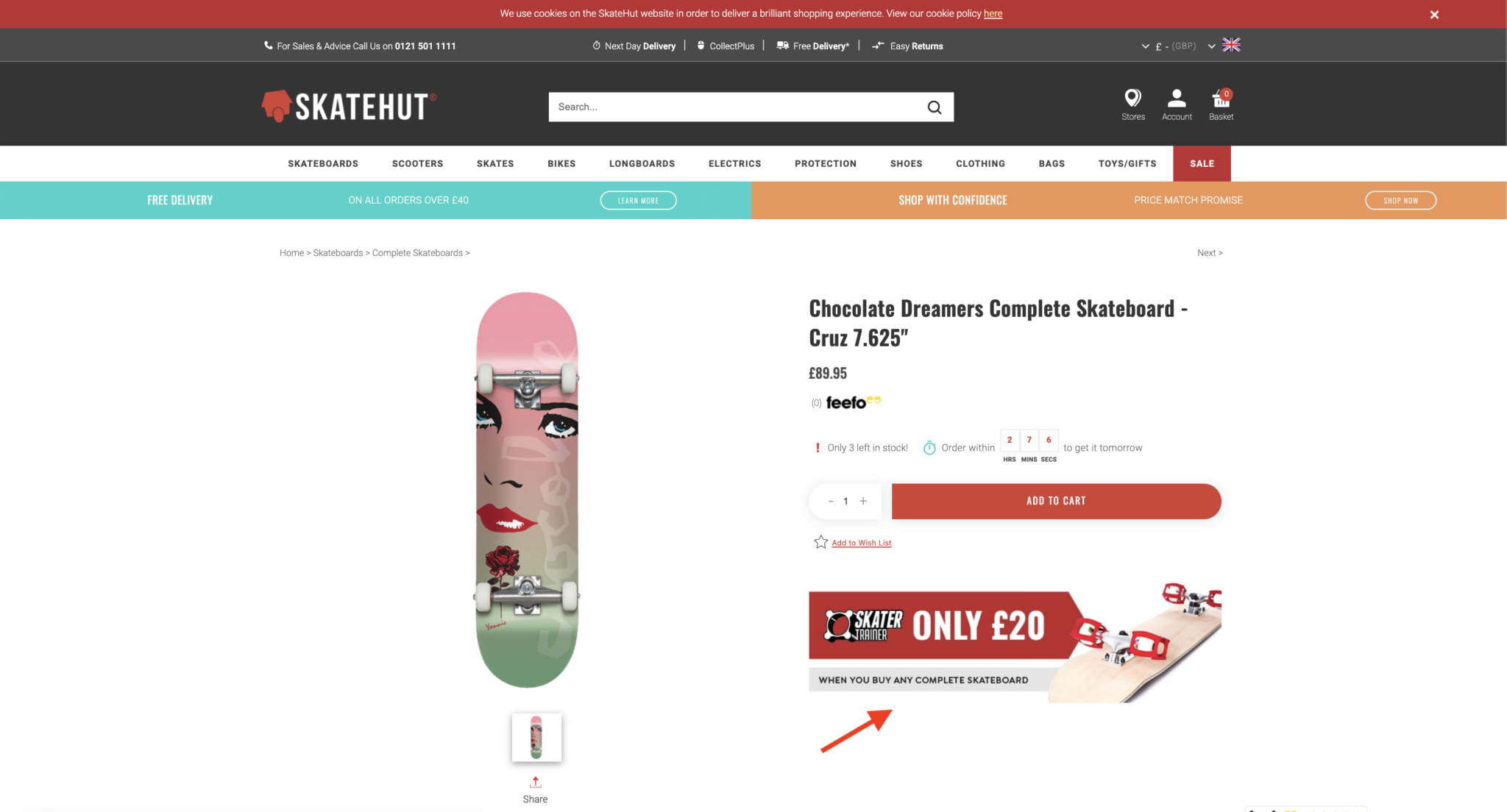
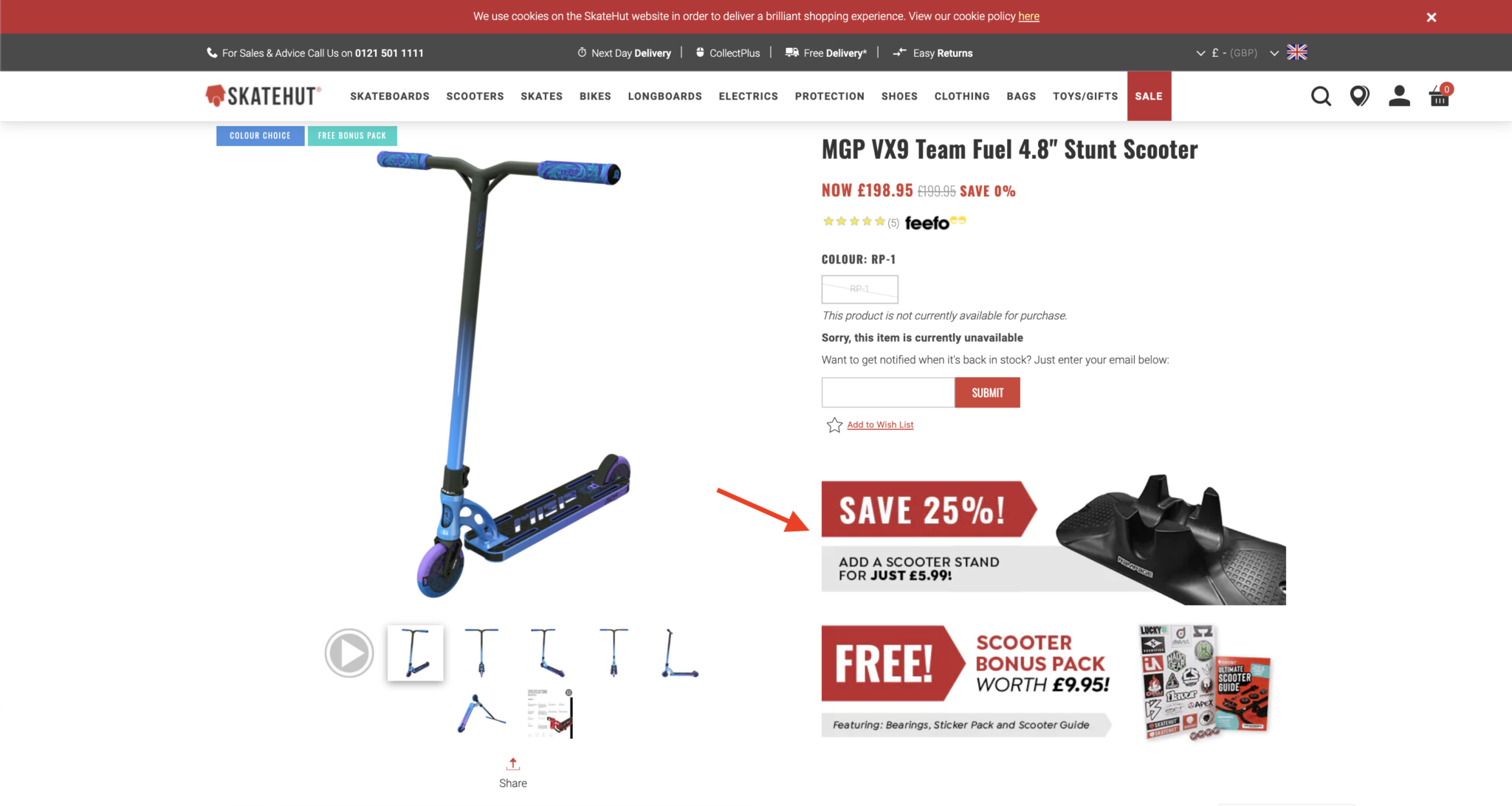
You can also promote your upsell and cross-sell offers on popups:
9. Use a free shipping sticky bar
Another method of increasing your AOV is by using a free shipping threshold to incentivize your customers to spend more on each order.
Free shipping is a particularly effective method for boosting AOV because online shoppers are very motivated to avoid shipping costs.
It’s easy to display the precise amount that customers need to add to their cart to qualify for free shipping using a sticky bar with Smart Tags. The message automatically updates whenever a customer adds an item to their cart, showing how much more they need to spend.
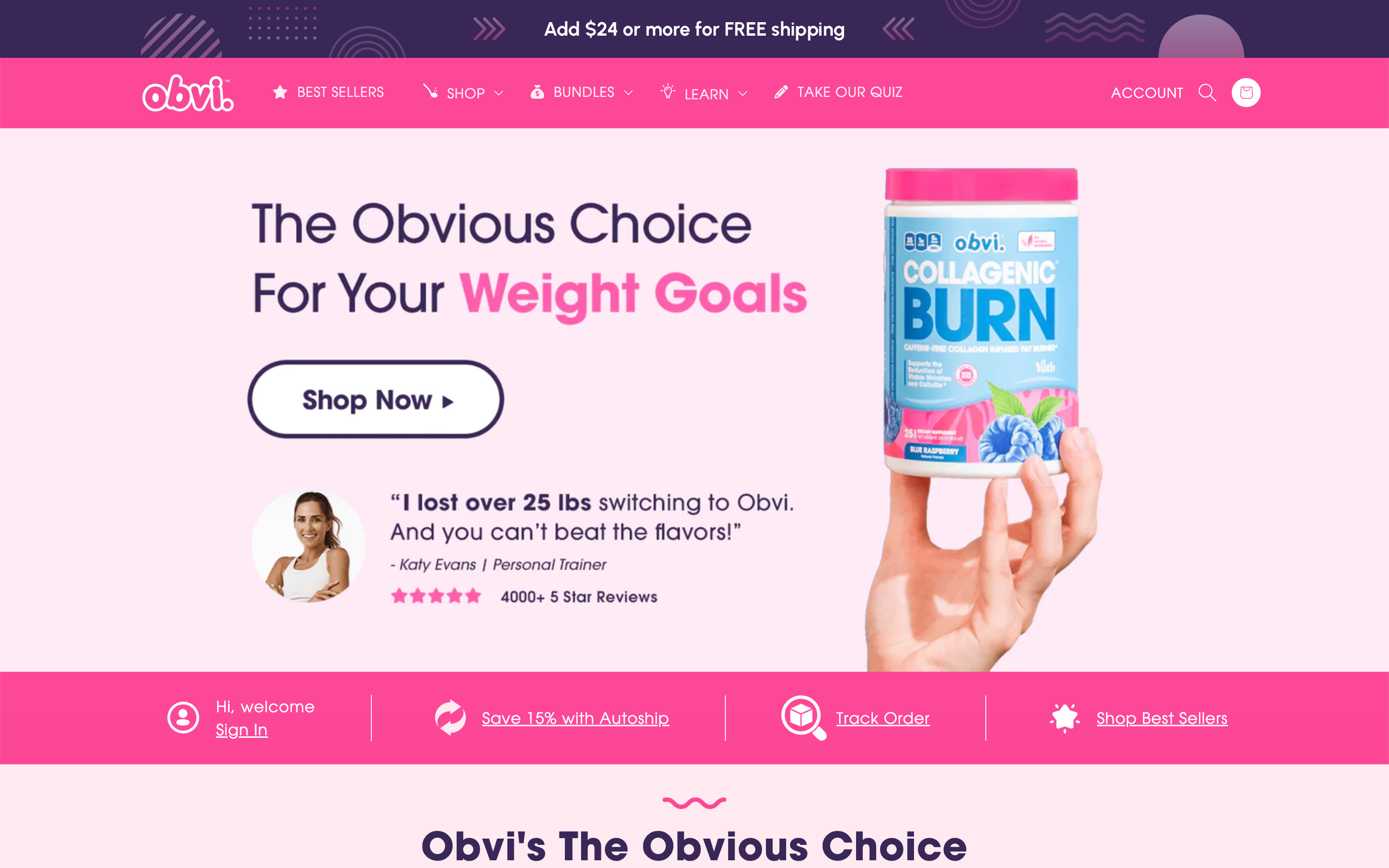
Get started with these free shipping bar templates:
10. Gamify experiences to increase new visitor engagement
If you’re looking to increase your user engagement, gamified popups are irresistible for website visitors. You’ll be able to collect more leads with a fun lucky wheel or scratch cards than you could ever generate with a boring welcome popup.
Interactive features and the chance to win will capture your users’ attention and encourage them to sign up for your list.
And OptiMonk’s gamified popups work great for both desktop and mobile users.
11. Collect feedback and improve the website experience
Gaining a solid understanding of your potential customers’ motivations and preferences is crucial for carrying out the kind of website personalization that can increase your conversion rate.
To collect this kind of information, you can ask your customers for feedback and insights through the use of post-purchase feedback forms. This will tell you what drives conversions and what can make your brand stand out.
You can present survey forms to your customers on your thank you page, where visitors are redirected after completing a purchase. Since these users have just made a purchase, they’re likely to be receptive to providing feedback and insights.
In fact, the conversion rate for this type of feedback form can be as high as 10-20%, making them an effective way to gather valuable information.
Once you’ve collected feedback, you can increase your overall website conversion rate based on what you’ve learned, improving the user experience and your messaging.
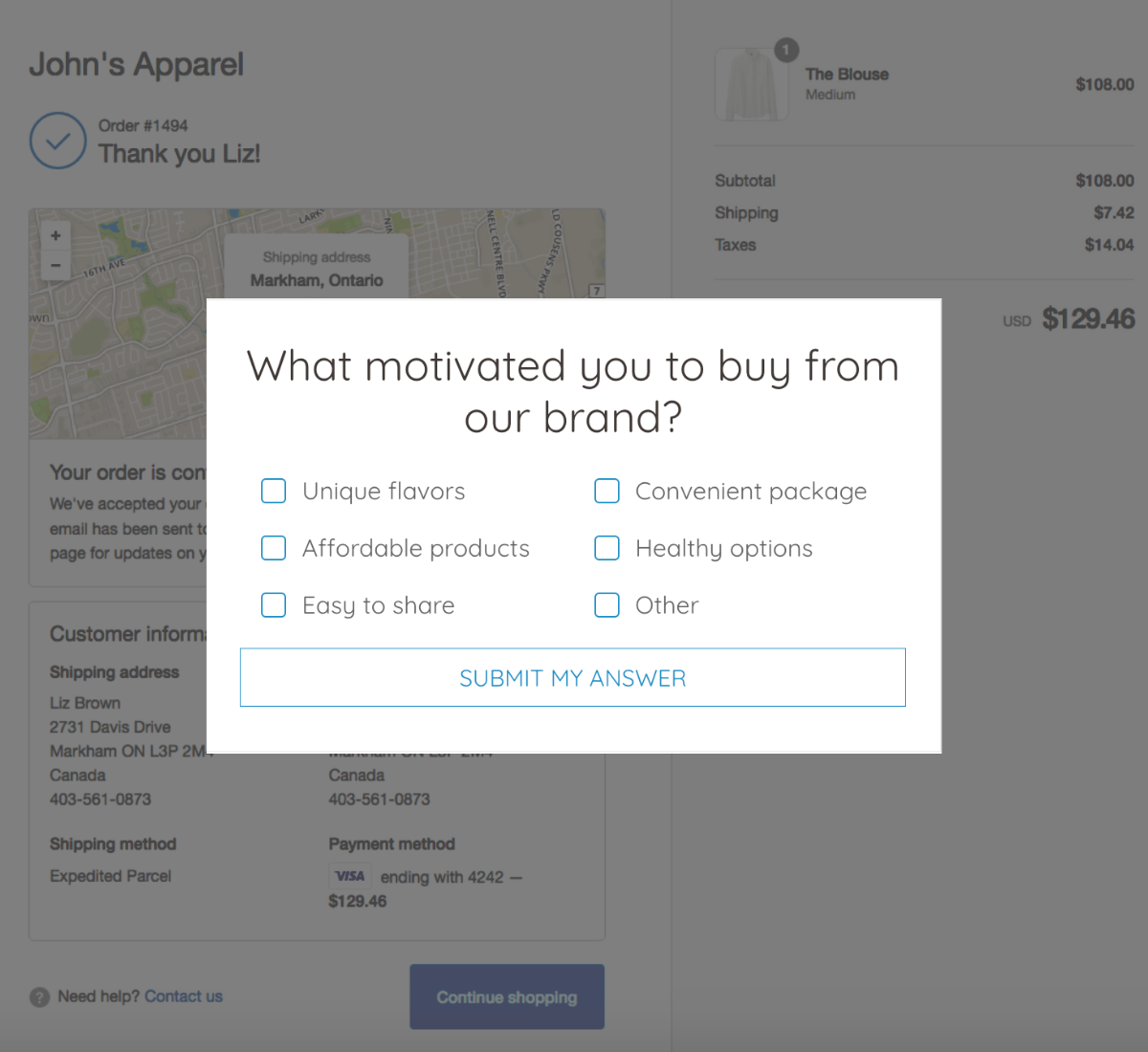
12. Recommend relevant products in blog posts
If you have a blog, but your articles aren’t driving sales, it’s time to try something new: embedding product recommendations.
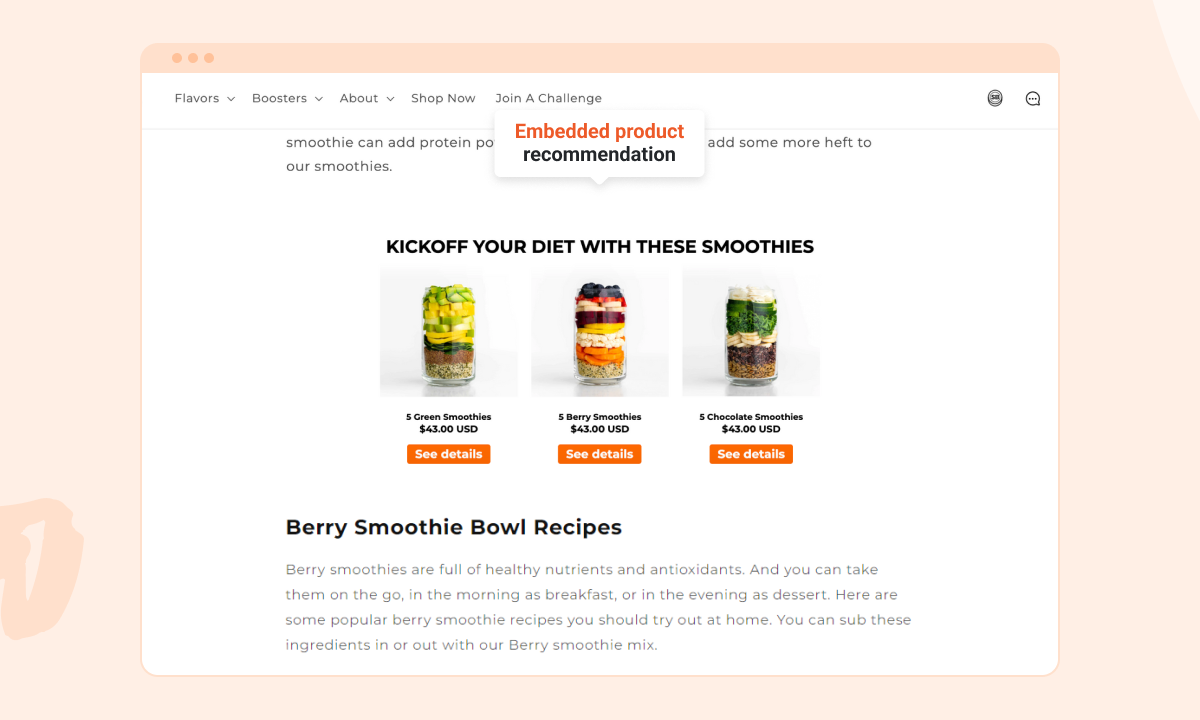
Integrating product recommendations within your blog articles can be a game-changer. Here’s why it works.
- Guides visitor interest: By recommending products relevant to the content, you’re guiding your visitors towards items they’re likely interested in. If someone is reading a blog about summer fashion trends, suggesting a trendy summer dress or accessory feels natural and helpful.
- Keeps people engaged: Relevant product recommendations keep readers on your site longer. They might click through to check out the products, browse your offerings, and even make a purchase. The longer they stay, the higher the chance they’ll convert.
- Increases conversions: When readers see products that align with the content they’re consuming, it can prompt them to buy. It’s a subtle way of nudging them towards a purchase without being overly salesy.
If you want to do it effectively, make sure the products you recommend are directly related to the blog content. If the post is about fitness tips, link to workout gear or healthy snacks.
You can use OptiMonk to embed the product recommendations naturally within the article. They should flow with the content, not feel like an interruption.
FAQ
What is conversion rate optimization?
Conversion rate optimization (CRO) is the process of improving your website or landing page to increase the percentage of visitors who complete a desired action. This action could be making a purchase, signing up for a newsletter, filling out a form, or any other goal relevant to your business. Conversion optimization involves analyzing how users interact with your site, identifying barriers to conversion, and implementing changes to enhance the user experience.
What’s the average conversion rate for websites?
It’s difficult to give just one number for the average conversion rate because it depends on the industry, business size, and the type of conversions being measured. One study suggests that the mean conversion rate across all US industries is around 2.35%.
Furthermore, the quality of incoming traffic and the quality of the onsite customer experience make a huge difference when it comes to website conversion rate.
What’s the key factor for better website conversion rates?
Conversion rate optimization is all about making small improvements to your user experience that can increase your overall website conversion rate.
For instance, speeding up any slow-loading pages can improve conversion rates since fewer customers will get frustrated and bounce from your page. Other factors that can lead to a higher website conversion rate include clear, compelling sales copy, social proof (like customer testimonials), intuitive web design, customer trust-building badges, and secure payment options.
Wrapping up
Hopefully, you’ve gained some insight about how to boost conversions! Implementing these strategies can make a huge impact on your conversion rate and bottom line.
It’s essential that you make the most of the traffic coming into your site. And when you consider that all the strategies we’ve recommended above will also improve the user experience on your site, it’s a no-brainer.
You can use OptiMonk’s conversion rate optimization software to add any of the campaigns we’ve covered to your site in minutes. Register now for free and skyrocket your conversion rates in no time!
Migration has never been easier
We made switching a no-brainer with our free, white-glove onboarding service so you can get started in the blink of an eye.

What should you do next?
Thanks for reading till the end. Here are 4 ways we can help you grow your business:
Boost conversions with proven use cases
Explore our Use Case Library, filled with actionable personalization examples and step-by-step guides to unlock your website's full potential. Check out Use Case Library
Create a free OptiMonk account
Create a free OptiMonk account and easily get started with popups and conversion rate optimization. Get OptiMonk free
Get advice from a CRO expert
Schedule a personalized discovery call with one of our experts to explore how OptiMonk can help you grow your business. Book a demo
Join our weekly newsletter
Real CRO insights & marketing tips. No fluff. Straight to your inbox. Subscribe now
Barbara Bartucz
- Posted in
- Conversion
Partner with us
- © OptiMonk. All rights reserved!
- Terms of Use
- Privacy Policy
- Cookie Policy
Product updates: January Release 2025









